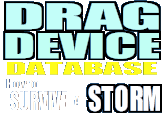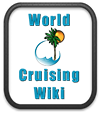Safety On Board
Sailing, even crossing oceans, is actually a lot safer than many people believe. In fact one study by an insurance company rated it between golf and bicycling in terms of risk of injury or death, see Beth and Evan’s article – No. 55.
Even so, there are clearly risks, and so, on-board Life Part 2, we take safety very seriously. Here is how:
There are basically three different causes of accidents:
First is stupidity. By that I include both doing stupid things – like heading to sea when a hurricane is forecast – and also failing to do sensible things, like routine repairs and maintenance.
Second is human error – despite your best efforts you make a bad decision. Or you lose your balance and fall. Or you are just worn out and tired and can’t think straight.
Third is pure bad luck – being in the wrong place at the wrong time despite all your best efforts. For example, just recently a Canadian woman on a fishing trip in Mexico was killed when a whale breached underneath the boat! Nothing you do can protect you from incidents like that. Despite your best efforts to heed forecasts, keep a good lookout and so on, you can still run into a semi-submerged container or a sleeping whale.
In practice, however, it usually takes a combination of several different things going wrong, all at the same time, to create a big problem. So the key to safety it to do all you can to prevent things going wrong, and then. if something still goes wrong, doing all you can to fix it before something else happens to compound the problem.
In the light of the above, this is what we do on Life Part 2:
Safety Equipment
This is all the stuff that one pays huge amounts of money for yet hope to never use. As you browse our site you will see all the repairs and upgrades that we have made in order to keep Life Part 2 safe, including installations of:
AIS (Automated Identification of Ships)- it helps to see and be seen by other boats, especially big ones! This is incredibly useful at night. One big bonus is that it can quickly show you if you are going to pass ahead of or behind a vessel – vital information that can prevent you from turning the wrong way. Also you can see the name of the ship, making it a simple matter to call them on the VHF to ensure they have seen you.
Radar – not used often, but vital in poor visibility such as fog, and also for spotting squalls that are approaching.
Para-anchor and drogues – how to slow the boat down and keep things safe in a storm. See the Drag Device Data Base for real first-hand accounts of how sea anchors and drogues can save lives at see. Don’t leave home without one! In my opinion these are as essential to have on board as EPIRBs and a liferaft.
Lifejackets (of course) equipped with safety harnesses so you can tether yourself safely to the boat. That stops you from becoming a man-over-board casualty and, believe me, we have heard several of those over the VHF radio in the past few years. Tragic.
AIS-SART (Search and Rescue Transponder). This is a personal beacon that we carry on us when making passages. If you fall overboard you can activate it and your exact GPS position will be transmitted to all nearby boats. On Life Part 2 that incoming signal will also trigger a loud audible alarm. That way we can turn around and find you.
EPIRB (Emergency Position Indicating Radio Beacon). This does the same thing as the AIS-SART except that the signal is beamed by satellite all the way back to Canada. So the response is somewhat slower. But if you are adrift in the middle of nowhere it does mean that, hopefully, someone will soon be coming out to find you.
Liferaft. Especially in a catamaran this really is an end-of-the-line last hope. It means the boat has sunk, burned down or capsized. To go with that we have a grab bag, and a hand-powered water maker. The grab bag also has a hand-held VHF radio with spare batteries.
Flares – to indicate to search and rescue where you are (in addition to the Mayday call, the EPIRB etc). There are sets in the grab bag, the liferaft and the boat itself.
VHF radio – both the main one, and a back up hand-held (plus another hand-held in the grab bag). These are used to call other vessels so as to prevent collisions and to call for help if needed.
Fire extinguishers and a fire blanket.
Carbon monoxide alarms in case the engine exhaust leaks into the bedrooms.
Training
All this equipment is not much use if you don’t know how to use them. As well as the usual courses on navigation and seamanship and VHF radio use we have also recently done the ISAF Sea Survival and Safety course which was both very instructive and a lot of fun!
Regular Maintenance
Sailing oceans is hard on a boat. Stuff breaks. The key is both to replace old things before they break, and to fix them when the break is still small. For example, the stitching on sails and the trampoline degrades in the sun. Far better to restitch them when you see a few stitches missing but the items are still in one piece than to wait for a storm to blow them apart into ribbons. For this reason we have a Sailrite sewing machine on-board which we consider to be as essential a piece of safety equipment as anything else.
We take frequent trips to the top of the mast to check on the rigging fixtures and replace if there is any indication of a problem. We also constantly check for chafe on lines or other signs of impending damage. If one item breaks, we will often also replace other matching items of the same age, under the presumption that they too may break soon.
Backups and Redundancy
The next thing we do is to have multiple backups in case of failures. As a catamaran we have the nice advantage of having two engines, so even if one dies we can still move!
We use electronic charting. But in addition to our main chartplotter, we also have charts and plotters installed on THREE laptops, anyone of which can take over as our primary navigation. These are fed by TWO GPS antenae.
And then we have a hand-held Garmin GPS, a GPS dongle for the laptops, and even two phones, both with GPS functionality. That is a lot of redundancy.
And then we have a sextant and other tools for conventional navigation, though we do keep our paper charts to a minimum.
Among the other spares and backups we carry are:
- A spare autohelm motor.
- Many engine spares, including a starter motor, alternator, water pumps, hoses, seals and so on.
- Two sets of navigation lights.
- Several anchors with available rodes.
- Two pairs of binoculars, and so on…
Prudent Seamanship
We then combine all this equipment with a prudent and conservative approach to sailing. We are not racing. We are in no hurry to get somewhere. So if the forecast looks a bit iffy, we will sit it out until it improves. If we get caught in some heavy weather we reduce sail early and go a bit slower. At night we often reduce sail anyway, just to avoid having to reef in the dark should the weather get up. If the weather improves, often we do not increase sail again, both to avoid unnecessary trips to the foredeck in dark and rough conditions, and in case the weather then worsens again, as it often does.
Now, there are times when all this proves to be rather inconvenient. Most obvious is if we are trying to meet an airplane flight that arrives or leaves on a certain day. So how do we manage that? Again, we keep a close look a the developing weather to estimate the traveling time to the rendezvous. If we are meeting arrivals, we will normally try to get there a couple of days in advance, so as to give us time in case of the unexpected.
If we are trying to get someone to a departure flight we will also be conservative in our planning.
However, sometimes the conditions simply do not cooperate. In that case our guests will have to be prepared to either adjust their flights, or else take a bus or train to get them from where we are to where the airport is.
What we won’t do is to compromise safety because we are on a schedule and ‘have’ to get to point A by a certain day and time. If you are coming to sail with us we hope that you understand this and can allow some flexibility in your travel arrangements – eg buy a flexible fare rather than a fixed unchangeable on.
Nothing in life is guaranteed. But we believe that with the above approach, cruising on-board Life Part 2 is a safe as sailing can be. Having achieved that, we can then focus on the fun and the adventure. After all, that is what Life Part 2 is supposed to be about!





